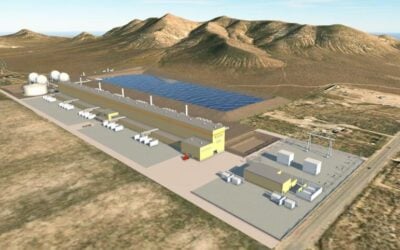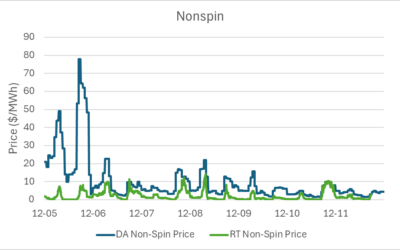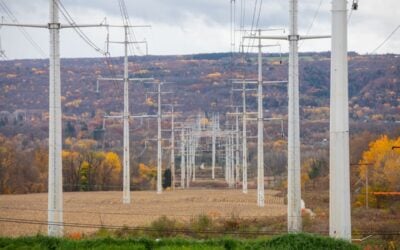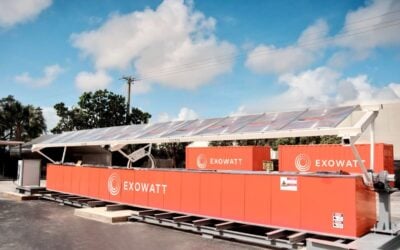
Ameresco has put Arizona’s largest behind-the-meter battery energy storage system (BESS) into operation, meanwhile Alliant Energy has begun operating Wisconsin’s largest BESS to-date.
Ameresco puts Arizona’s largest behind-the-meter BESS into operation
Ameresco has announced the development and commercial operation of a 50MW/200MWh BESS project in Arizona.
Ameresco claims it is the largest behind-the-meter (BTM) BESS project in the state.
The BESS was created in Kingman, Arizona, for Nucor, North America’s leading steel producer. Nucor’s bar mill is currently expanding, with a new electric arc furnace being installed.
Try Premium for just $1
- Full premium access for the first month at only $1
- Converts to an annual rate after 30 days unless cancelled
- Cancel anytime during the trial period
Premium Benefits
- Expert industry analysis and interviews
- Digital access to PV Tech Power journal
- Exclusive event discounts
Or get the full Premium subscription right away
Or continue reading this article for free
It was installed at a Nucor substation within Mohave Electric Cooperative’s territory and is operated by Arizona Electric Power Cooperative (AEPCO), part of the Arizona G&T Cooperatives.
Construction began in December 2024, featuring 58 Tesla Megapack 2XL units under a 20-year Storage Services Agreement (SSA).
The company will also deliver a 25MWac solar asset, scheduled to begin operation in 2026, supporting Nucor.
Amaresco has been known as a system integrator, but as covered in 2023 by Energy-Storage.news Premium, the company has moved into owning projects.
In August, Ameresco released its Q2 2025 financial results, with an 8% growth in total revenue and a 24% growth in adjusted EBITDA.
The company has multiple contracts with the federal government and US military, including an energy infrastructure project secured for US$197 million earlier this month, with the US Naval Research Laboratory.
CEO George Sakellaris noted of the recent results, “We are pleased to note that our business with the Federal Government is returning to a more normalised cadence, and while we continue to evaluate the industry changes brought about by the OBBB Act, we do not believe that these changes will have a material impact on Ameresco in the short term.”
Alliant Energy begins operating Wisconsin’s largest BESS
Wisconsin utility Alliant Energy has integrated its first 100MW/400MWh BESS, next to a 200MW solar project in Grant County.
The BESS project in the Town of Potosi, Grant County, stores electricity during low demand and releases it as needed.
The state’s first large-scale BESS, the 110MW Paris Solar-Battery Park went into service in December 2024. Utility We Energies holds the majority ownership of the project, while Wisconsin Public Service (WPS) and Madison Gas and Electric (MGE) share co-ownership.
Alliant says its newly integrated 100MW project supports its ‘Energy Blueprint’, the company’s plan for increasing generation capacity through wind, solar, hydropower, natural gas, coal, and energy storage.
By 2030, the company is aiming to reduce greenhouse gas emissions from its utility operations by 50% from 2005 levels.
Alliant is looking to eliminate all coal from its generation fleet by 2040, and by 2050, is planning to achieve net-zero greenhouse gas emissions from its utility operations.
According to the US Energy Information Administration (EIA), in 2024, renewable resources provided 12% of Wisconsin’s in-state electricity net generation.
Solar resources became the largest contributor, supplying approximately 41% of the state’s renewable electricity. This surpassed wind power at 24% and hydroelectric power at 23%.
In the first half of 2025, Wisconsin added 274MW of new utility-scale solar PV capacity, increasing the total number of solar power facilities to 99 with a combined capacity of approximately 2,380MW. The largest facility, the 250MW Darien Solar Energy Centre, which features over 600,000 solar panels, became operational in March.
The project will adopt Energy Dome’s CO2 Battery technology, which stores energy through the adiabatic compression of carbon dioxide. During charging, the gas is liquefied, and during discharging, it evaporates as part of a thermodynamic cycle.
Construction on the project is expected to begin in 2026 and be completed by the end of 2027.





